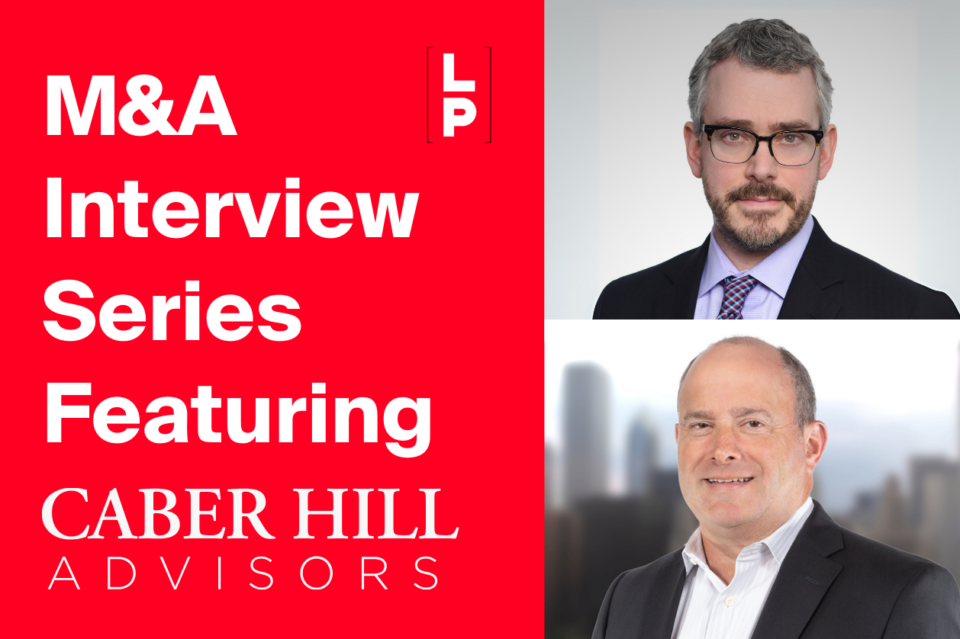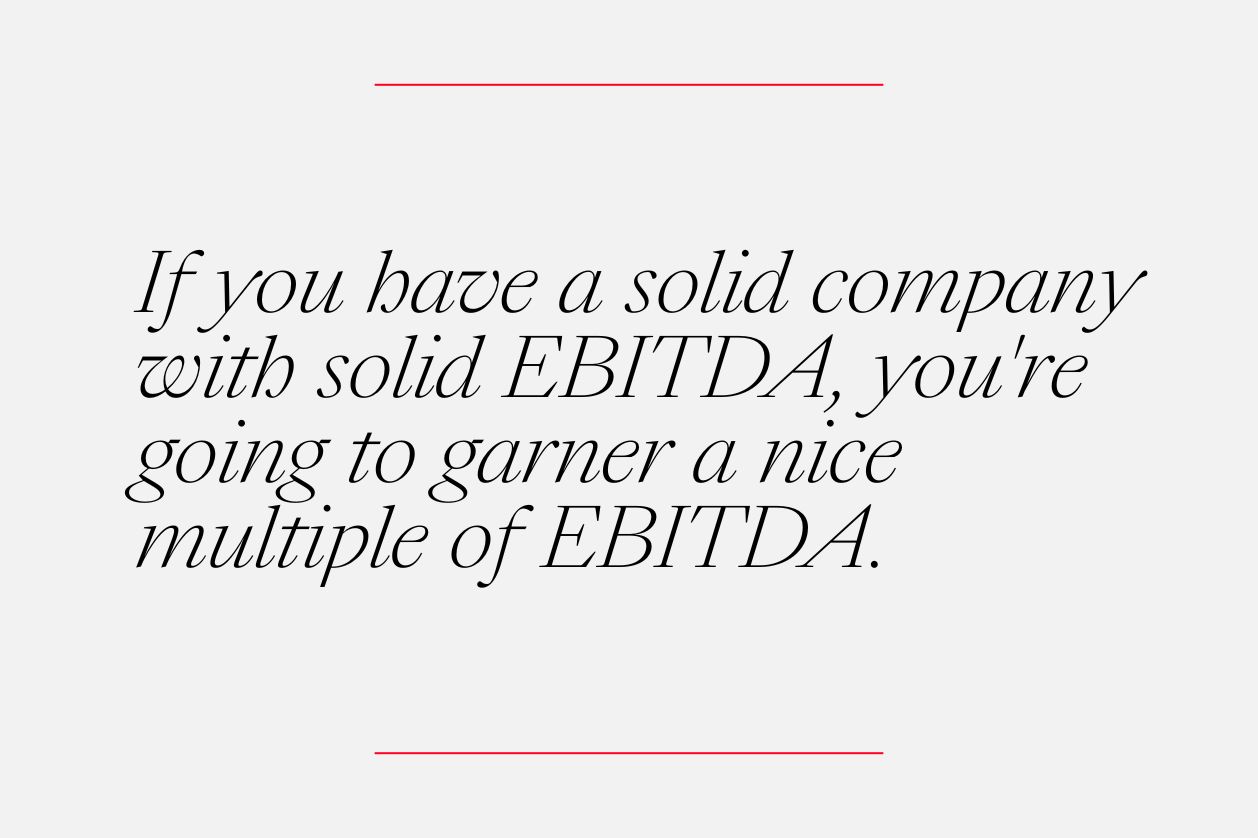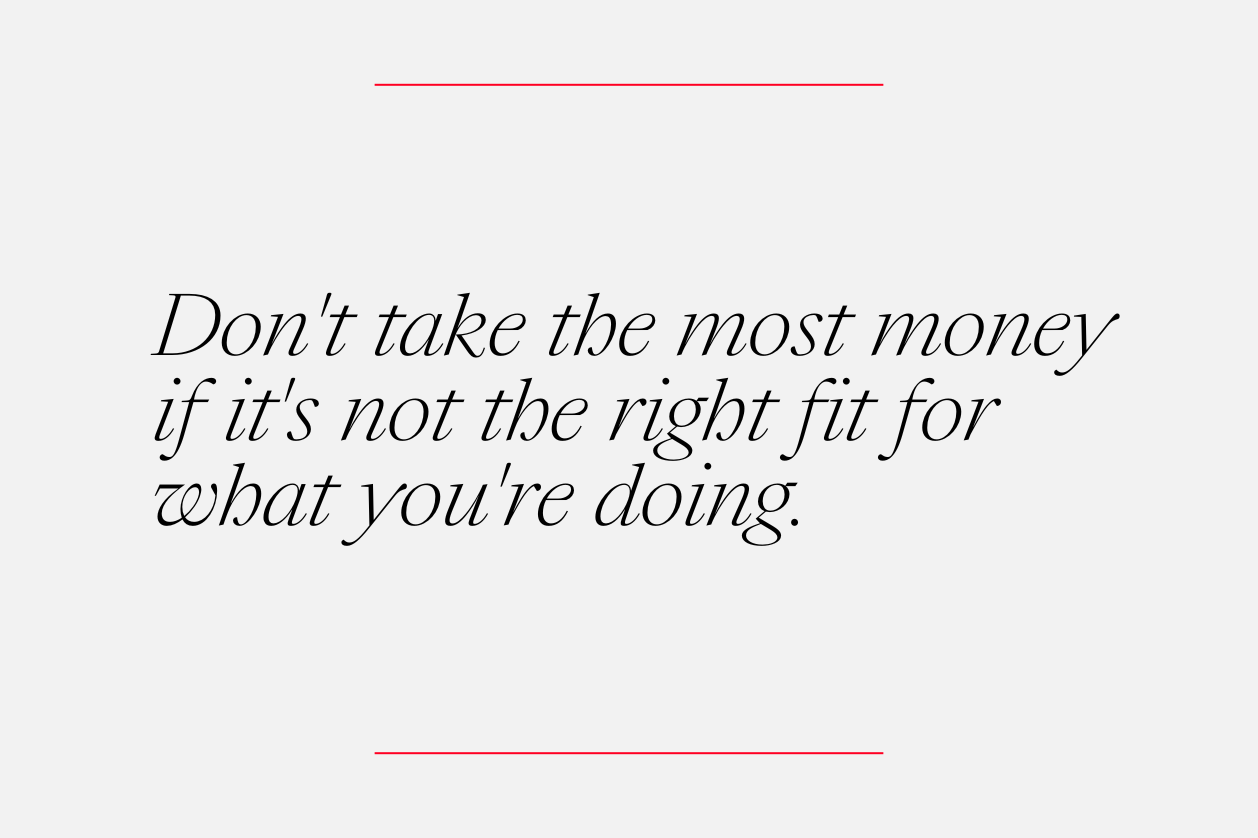What to Expect When Selling a Business: A Conversation with Jordan Gerber at Caber Hill Advisors

To help businesses, investors, and deal professionals better understand the evolving M&A market, Rob Connolly – a partner in and leader of LP’s Corporate Practice Group – shares a sequence of conversations with M&A experts.
Below is his conversation with Jordan Gerber, a Managing Director at Caber Hill Advisors, an M&A advisory firm that focuses on helping privately-held, middle-market businesses transact with strategic or private-equity-backed buyers. Jordan has over 25 years of experience as an M&A advisor across diverse industries. In this Q&A, Jordan talks about how his background helps him advise sellers, the current state of lower middle market M&A activity, and what sellers can expect when considering a sale.
The responses below have been edited slightly for brevity and clarity.
How would you describe the current lower middle market M&A environment?
It’s been slower compared to COVID years. We’re finally starting to see a break in the market, but I’ve been busy throughout the past few years. I’ve got a good group of referrals that always include me, so I’m on pace to do four deals this year. With interest rates being lowered, owners aging out, and the next generation not taking over, we’re starting to see a little more activity. In mid-2024 and into 2025, private equity is sitting on dollars they need to spend, so I’m hoping 2025 will be as good a year as late 2024 is.
What are key trends you’re seeing in the lower middle market segment?
Regarding the key trends, we’re seeing many more add-ons than platforms. With the interest rates so high, the larger deals were just not getting done. I think many PE firms bought platforms in 2021 and 2022, and now they’re bolting on those to create what they envision to be these super companies. That’s what I’m seeing – a lot more add-ons than platforms. That’s not to say there aren’t some platforms, but the bulk of the transactions I’m seeing in the market are add-ons.
What sectors or industries are you currently seeing the most M&A activity in the lower middle market?
Right now, business services are popular, so CPA firms, law firms, insurance companies, and registered investment advisors are all super popular. Businesses that we call “facility services,” such as HVAC, landscaping, roofing, plumbing, and blue-collar companies, are all really popular. Manufacturing and industrials have always been steady and continue to be steady. Certain health care groups are becoming popular – dermatology, mental health, and other areas like that are super popular right now.

We’re seeing a lot of roll-ups. We’re seeing a decent amount of carve-outs and add-ons. Valuations have been flat for a while, down from the COVID years, but we’re starting to see a little bit of tick up. If you have a solid company with solid EBITDA, you’re going to garner a nice multiple of EBITDA. If the management team is in place, there’s no concentration of customers, and you have a diverse set of customers with reoccurring revenue, you should be paid well for that company. The manufacturing companies were from four to six times. We’re seeing up to 8 to 10 times for HVAC companies, and business services are probably somewhere in the middle.
Multiples vary from four to ten times, depending on the industry. But that’s a question I always get asked, so it’s hard to put your finger on it, but there are industry standards out there.
What is the current state of financing for lower middle market deals?
Banks are starting to lend again. SBA financing is always an option for much smaller deals. Traditional bank financing or debt financing is out there. The PE firms are either raised in capital or are sitting on capital, so that’s always an opportunity for them.
Family offices are also getting into play and have capital, but they need operators as well. They just don’t have operators for family offices, but that’s a big new trend for buyers that are out there.
Traditional strategics are also out there. A lot of the companies that are strategics are owned by private equity. We’re working on a deal right now where we thought we had a strategic buyer, but we found out they’re owned by private equity. We’re calling those hybrids where it’s a buyer in the space and they know the space, but they’re funded by a bigger PE firm, which helps from that standpoint.
Interest rates are coming down. That’s obviously loosening up some dollars in the market. The banks are loosening up their credit analysis, so we’re starting to see funds flowing back in from a lending standpoint. Private equity has always been sitting on funding, but we’re starting to see more banks allowing the acquisition of financing to open up again.
Among the primary buyers, PE is probably 60% of my buyer group. Then it’s strategics, family offices, or independent sponsors, which are groups that have raised a decent amount of money to buy one company. Those tend to be smaller deals, but there are a lot of independent sponsors out there right now. They have raised “friends and family” money and will use some debt and equity to purchase the company they’re looking at.
How are buyer-seller expectations aligning (or not aligning)?
They align in some regard but always diverge in other ways. Valuation is always the most significant roadblock between buyers and sellers. We had just done an LOI with a company the owner thought was valued a lot higher, and the buyer wasn’t willing to pay. We finally agreed on a price. We’re going into the diligence phase now, but it took a while. The biggest issue we have between buyers and sellers is agreeing on a price. Sellers always think they have the “most beautiful baby,” and buyers aren’t willing to overpay right now. That’s probably our biggest challenge: agreeing on a purchase price.
After that, it’s how long an owner stays on, ensuring the employees stay, maintaining the legacy, etc. At Caber Hill, valuation, owner’s next steps, employees, and legacy are the top four things we look at. So that’s always an important thing for our sellers and we want to make sure the buyers are in line with that. We don’t want someone to come in and gut the company. We want to make sure what the owners built is maintained. Most of our clients are family-owned businesses, and the next generation doesn’t want to take over. They care about what they’ve built, which is important to sellers outside of just valuation.

Some of the biggest challenges right now are related to diligence. Getting to close has a lot of hurdles. The buyers are doing a lot more homework than they did a few years ago and rightly so, which is important to make sure everybody’s happy when we get to a close.
We’re seeing a lot of diligence, and it’s usually broken down into three phases. The first phase is financial. With the quality of earnings, a CPA verifies that the revenue, income, and other financial-related items are valid. That usually takes about 30-45 days. Second there’s cyber diligence, HR and employee benefits diligence, and tax diligence. All those are taking another 30+ days. Then, finally, legal diligence takes another 30-45 days. So, we’re seeing diligence take about 90-120 days now, which is longer than it has been in the past. The buyer wants to make sure they’re getting what they are buying, and the seller is telling them everything that needs to be told. You don’t want any surprises after the transaction, so it’s essential to go through that, but it is taking a lot longer to get to close. That is the latest trend out there: extended diligence.
Do you have any predictions for the lower middle market M&A landscape over the next year or so?
I think M&A will be strong. There are a lot of companies in need of sale and not because they have to sell from a financial standpoint; it’s that the owners are aging out and there’s not another generation to take over. I think a lot of the manufacturing-type products and widget-type products are going to come to market and they’re all really solid companies with $2+ million of EBITDA and they’ll either be added on to something or part of a new platform. We’ll start to see a lot more deal flow coming through over the next couple years.
One of the biggest opportunities for investors is manufacturing. It has been overlooked through all this upswing during COVID. There are some great manufacturing companies out there that are building some great products. Those will be good opportunities for buyers to buy several manufacturing companies in the same space. We just saw one in the electrical switchboard space, and that buyer is looking to add on to that very quickly. We think that space is great for them, and there are plenty of other opportunities for someone to buy several similar companies in the same industry.
Over the next several years, merging sectors like beverage sectors or anything in distribution is super-hot. Healthcare will continue to be popular, as well facility services, but we really like the food and beverage space right now. We think that’s going to be the next the next big area of roll-ups. Like I said, we have an electrical switchboard company, and the owner-founder passed away. His son stepped in and took the business but needed some help, so we ended up selling 70% of the business and he wanted to keep 30% of the business. We’re seeing several opportunities where sellers can keep some equity and get another bite of the apple. The seller got paid well, the deal closed, they’re building a larger business now, and he’ll get another piece of that when they sell in five to seven years. We’re seeing a lot of those and we can help through that at Caber Hill.
We’ve got another deal in the travel space that is going to close at the end of next month. We found a strategic buyer that had private equity money behind it. So, there are really good opportunities for sellers to find the perfect buyer for them. That’s our secret sauce at Caber Hill: trying to find the perfect buyer for our sellers and giving them everything they need for a life-changing opportunity.
Regarding the food and beverage sector, what factors are driving that activity?
During COVID, people were going to the grocery store more, and now people are going out to restaurants more. There’s new manufacturing automation out there, and opportunity for family-owned businesses to sell to that. The population is obviously eating more, drinking more, and going out to restaurants more. I think that is driving the demand for food and beverage.
Do you have any lessons learned from deals that didn’t go as planned or advice for business considering a possible sale?

I think the most important advice is don’t take the most money if it’s not the right fit for what you’re doing. Everyone looks at the highest valuation. We’ll bring our sellers several offers, and 20% of the time, the seller doesn’t take the most money. It’s got to be the right fit. We can’t fit a square peg into a round hole, whether it’s different cultures, different geographical locations, or any number of reasons why a buyer might not be the right fit for our seller.
That’s why it’s crucial to have an advisor and go through the process – you can see all the potential opportunities that are out there. We look at several factors to check the box and make sure the owner is happy with whoever they are going to partner with because it’s not just going to be closed and done. Sellers will probably have to stay on for some time, and they won’t be owners now but employees of a new company. We want the seller to be happy with their choice outside of money.
We’ve seen several deals and sellers unhappy with where they went because they took a money grab, even though we gave them advice that this might not be the right fit or the right culture. We’re good at listening to what our sellers say over the year and a half we work with them, and we try to focus on finding the perfect fit for them, their employees, and their legacy.
As far as anybody looking to potentially sell, the market is in a day with buyers – it’s a great time to sell. But you should definitely have someone in your corner helping you go to market. Private equity is experienced with this. You want an advisor and definitely want to work on your financial statements. Make sure you know your concentration of customers are not all one customer. Make sure you have your management team in place. Make sure you have some form of recurring revenue. If you’re looking to sell, make sure you give yourself about 12 months to work on your financial picture, make sure the operations side is clean, and then bring on the right advisor to take you to market and find several buyers interested in buying your company.
How does your background influence your M&A advisory services?
I started as a CPA, then I started my own business and sold it. So, I’ve been in the seller’s seat before I went through a transaction. I did not have an advisor, and I wish I’d had one. It was very stressful process, and I definitely left money on the table. But I’ve been through transactions on both sides of the table. I understand what sellers are going through. It is stressful. Most of the time, sellers are doing this once in their lifetime, and I understand what they’re going through and can advise them through it. I can help them know what to look for, what the pitfalls are, and how to get to a close. That’s why I joined Caber Hill. We were all business owners and finance individuals. We want to help sellers get to a close, which is the eventual goal for being hired.
Your background gives you that unique ability. In every deal, there is a subjective psychology that’s embedded into it that sellers need to think through.
Yeah, I absolutely agree. We wear a lot of different hats in what we’re hired for – read financial statements, negotiate deals, and talk to owners about what this looks like from a myriad of different points. Because I’ve been through it, that’s really helpful.
We put together a list of things we do for our clients, and once you go through it, you will see that it’s a lot. It starts with finding the buyer, which is the easy part. Getting to a close is the hard part. We’re there every step of the way, and our team is excellent at doing that. We run point on this deal so the owner can run the business. That’s what we want. We don’t want the owner’s financials to drop off because they’re focused on running the deal; we really want them to focus on running the business. That’s where we come into play – to be the quarterback for this deal. We’re part of the team and that’s what any good advisor should be – an extension of the team and help the owner through this process, a lot of which is psychology. A lot of it is debates back and forth. My owners and I talk several times a day. When it gets close to a close, I’ve had some owners get cold feet. I’m here to listen. I’m here to give advice and help the owner make the right decision.
For instance, we’re 30 days out from closing on one deal, and I’m talking to the owners probably twice a day now about other random stuff. A lot of it is venting to me, and I am an ear for them to listen to as they go through this transaction. An owner called me two days before he was to close, and he wanted to walk. We spent several hours on the phone. He’s called me since they closed six months ago and thanked me for all we did for them. It really is an important role that we play in getting a transaction done.
For more information on Jordan Gerber, view his bio. For more information on Caber Hill Advisors, visit their website.
Interested in participating in a future interview series? Please contact Robert Connolly at rconnolly@lplegal.com.
To read other articles in this series, please see here: Insights | LP (lplegal.com)
Filed under: Corporate
Related insights
October 30, 2024
Part 2: Private Equity Profiles and Perspectives: An In-Depth Conversation with Pat Riley and Lukasz Wrona of Akoya Capital
Read MoreOctober 23, 2024